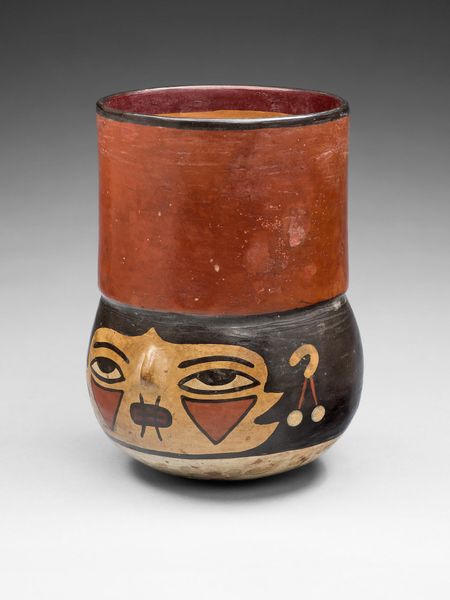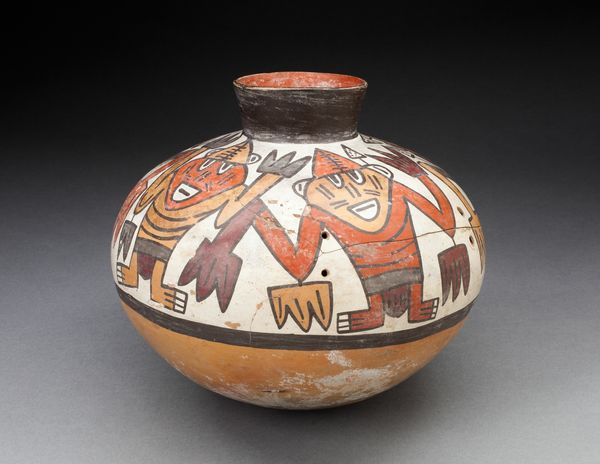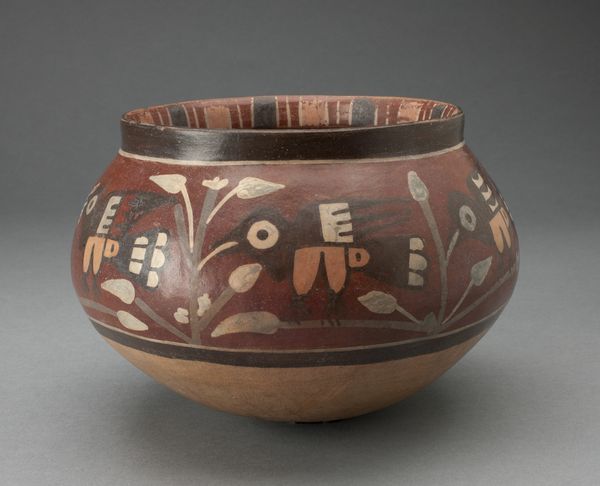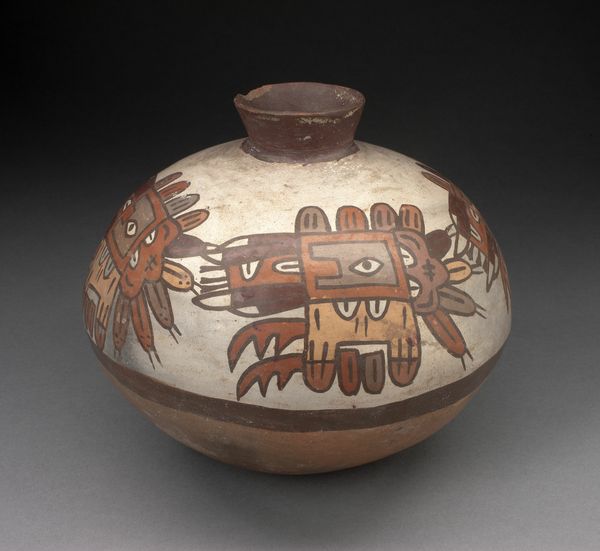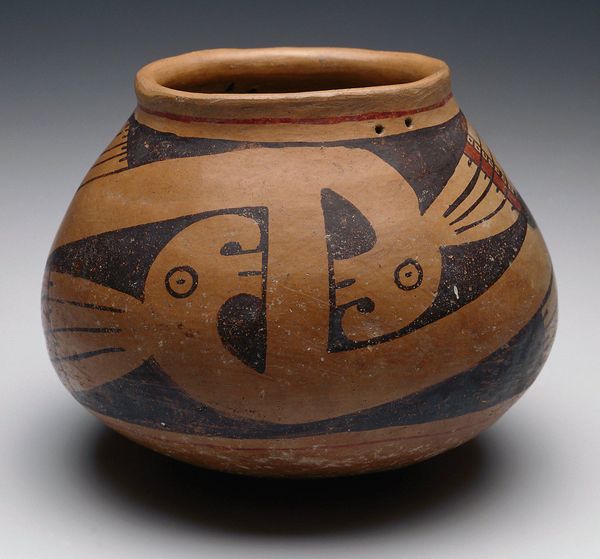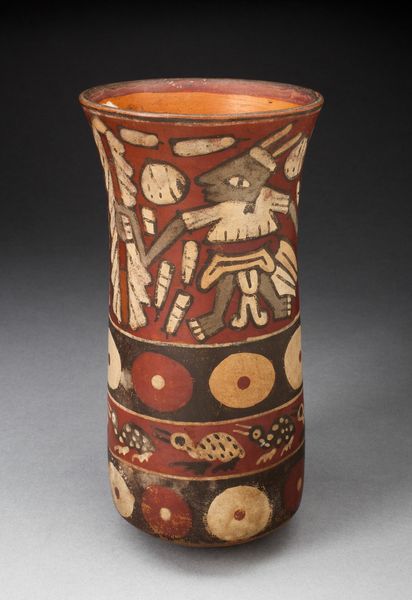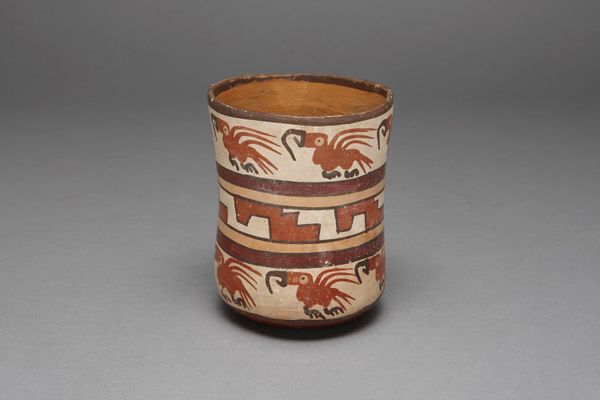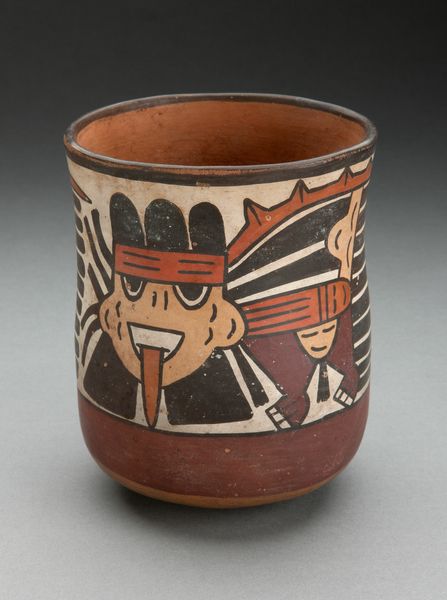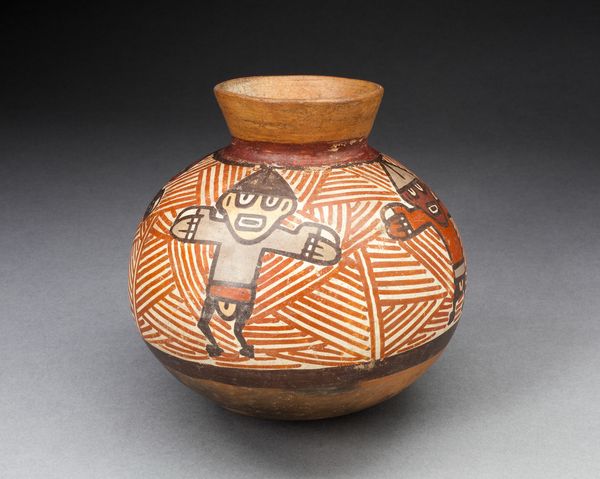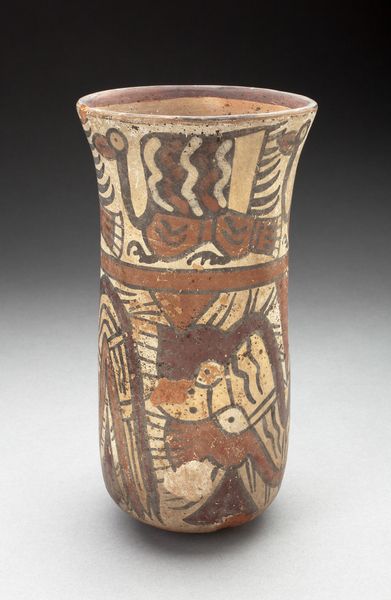
Jar Depicting Composite Feline and Serpent Beings, Heavily Restored c. 180 - 500
0:00
0:00
ceramic, earthenware
#
ceramic
#
figuration
#
earthenware
#
ceramic
#
indigenous-americas
Dimensions: 20 × 13.7 cm (7 7/8 × 5 3/8 in.)
Copyright: Public Domain
Editor: This is an earthenware jar from the Nazca culture, created sometime between 180 and 500 AD. It’s entitled “Jar Depicting Composite Feline and Serpent Beings, Heavily Restored”. What really strikes me is how the artist merged the feline and serpent images into what appear to be narrative figures on the jar. How might we understand the creation of these specific composite beings, and their meaning to the culture that made them? Curator: Considering the jar's creation, it’s important to analyze the sociopolitical factors influencing imagery and art during this time. Ancient Andean societies often integrated animal figures in their religious and social systems. The feline, possibly representing power or the priestly class, and the serpent, symbolizing fertility or the underworld, converge into beings of power that likely played a significant role in their belief systems. Notice how the depicted figures are arranged; their interaction and posture suggest that the art assumes a storytelling quality or ritualistic enactment. What statement might the culture have sought to proclaim or affirm with such narratives? Editor: I see what you mean. Perhaps these composite creatures embodied specific societal roles or codified historical sagas. I hadn't immediately thought about it as reflecting institutional powers. The museum card called this example "heavily restored," and I didn't initially process that the restoration may actually *obscure* our reading, given how much might have been 'filled in' according to modern interpretations. Curator: Exactly. It is crucial to remember the restorations we are dealing with and how the socio-political and even financial interests behind them impact how we read historical pieces such as this. A restoration reflects *our* time just as surely as the original work reflects the original time. Editor: I see what you're saying - a lot more is involved in even viewing historical art than just the initial creative act. Thanks for providing context. I'll think about that every time I see a restoration. Curator: It is also why it is rewarding to question, contextualize, and re-evaluate at every opportunity. That way, our view becomes more comprehensive.
Comments
No comments
Be the first to comment and join the conversation on the ultimate creative platform.
